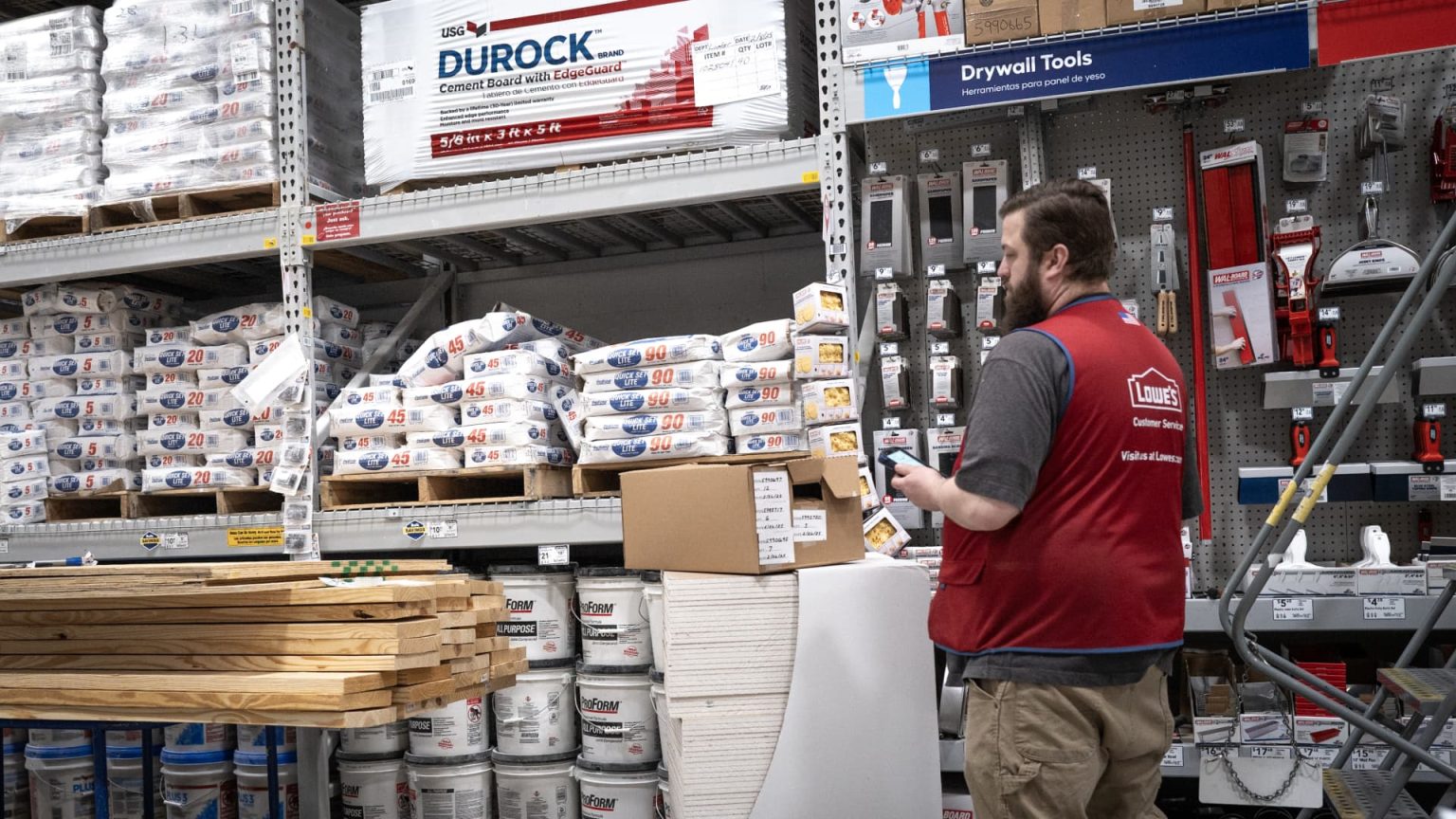Lowe’s Companies Inc. reported its financial results for the fiscal first quarter on Wednesday, revealing a mixed performance primarily driven by shifting consumer behavior. While the home improvement retailer experienced a decline in net income, strong sales among home professionals helped stabilize its overall outlook amid challenging market conditions. Lowe’s remains optimistic, maintaining its full-year sales forecast as it adapts to consumer demands and market dynamics.
| Article Subheadings |
|---|
| 1) Financial Results Overview |
| 2) Sales Performance Review |
| 3) Strategic Initiatives and Investments |
| 4) Market Conditions and Challenges |
| 5) Future Outlook |
Financial Results Overview
Lowe’s reported its fiscal first quarter results for the period ending May 2. The retailer’s net income fell to $1.64 billion, or $2.92 per share, a decrease compared to $1.76 billion, or $3.06 per share, in the same quarter last year. Despite the decline in net income, the company managed to exceed earnings expectations, with analysts anticipating earnings of $2.88 per share. On the revenue front, Lowe’s generated $20.93 billion, slightly below the projected $20.94 billion.
Sales Performance Review
In this reporting period, comparable sales experienced a decrease of 1.7% year over year. The decline is attributed to various factors including adverse weather conditions which negatively impacted sales. However, the company noted a silver lining in the form of significant growth in online sales and an increase in business among home professionals. This dual-channel performance illustrates a key trend of shifting consumer behavior towards both digital and professional procurement.
Strategic Initiatives and Investments
Lowe’s has actively sought to enhance its service offerings and improve customer experience, which is reflected in its continued investments in stores, technology, and service components. CEO Marvin Ellison highlighted these strategic initiatives as crucial for navigating “near-term uncertainty and housing market headwinds.” In addition to internal enhancements, Lowe’s announced its acquisition of Artisan Design Group, a $1.3 billion investment aimed at bolstering its design services and capabilities in serving homebuilders and property managers.
Market Conditions and Challenges
The context in which Lowe’s operates is characterized by high interest rates and a slowdown in housing turnover, factors that have dampened consumer appetite for home improvement projects. Such economic pressures have resulted in a more cautious spending behavior, particularly among do-it-yourself (DIY) customers. Despite these headwinds, the company predicts that its focused efforts on professional contractors and service enhancements will lead to a stronger sales rebound later in the fiscal year.
Future Outlook
Looking ahead, Lowe’s maintains a positive outlook, expecting full-year total sales to range from $83.5 billion to $84.5 billion. This forecast positions the company to surpass its total revenue of $83.67 billion for the previous fiscal year, reflecting a determined effort to adapt to market conditions. Furthermore, the company anticipates comparable sales to remain flat to up by 1% year-over-year, alongside projected earnings per share ranging from $12.15 to $12.40. These forecasts indicate confidence in Lowe’s strategic focus and adaptability.
| No. | Key Points |
|---|---|
| 1 | Lowe’s reported a net income of $1.64 billion for the fiscal first quarter, down from $1.76 billion year-over-year. |
| 2 | Comparable sales decreased by 1.7%, impacted by adverse weather and changing consumer behavior. |
| 3 | Despite sales challenges, Lowe’s exceeded earnings expectations of $2.88 per share with a reported $2.92. |
| 4 | The company’s acquisition of Artisan Design Group aims to enhance its services to homebuilders and property managers. |
| 5 | Lowe’s projects full-year sales between $83.5 billion and $84.5 billion, reflecting confidence in market recovery. |
Summary
Lowe’s financial results for the fiscal first quarter reveal a mixed performance amid tough market conditions. The retailer’s strategic initiatives, including significant investments and a strong focus on home professionals, offer a pathway toward recovery. While the company navigates current sales challenges, its optimistic outlook for future performance underscores an adaptive approach to shifting consumer trends and economic pressures.
Frequently Asked Questions
Question: Why did Lowe’s experience a decline in net income?
Lowe’s net income fell due to a decrease in comparable sales and overall market challenges, including high interest rates and slow housing turnover.
Question: What strategies is Lowe’s employing to attract more customers?
Lowe’s is enhancing its customer service and investing in technology and store improvements, as well as targeting home professionals to offset softer DIY sales.
Question: What is the significance of the acquisition of Artisan Design Group?
The acquisition is aimed at expanding Lowe’s service offerings to homebuilders and property managers, thereby enhancing its market presence and growth potential in the professional segment.


